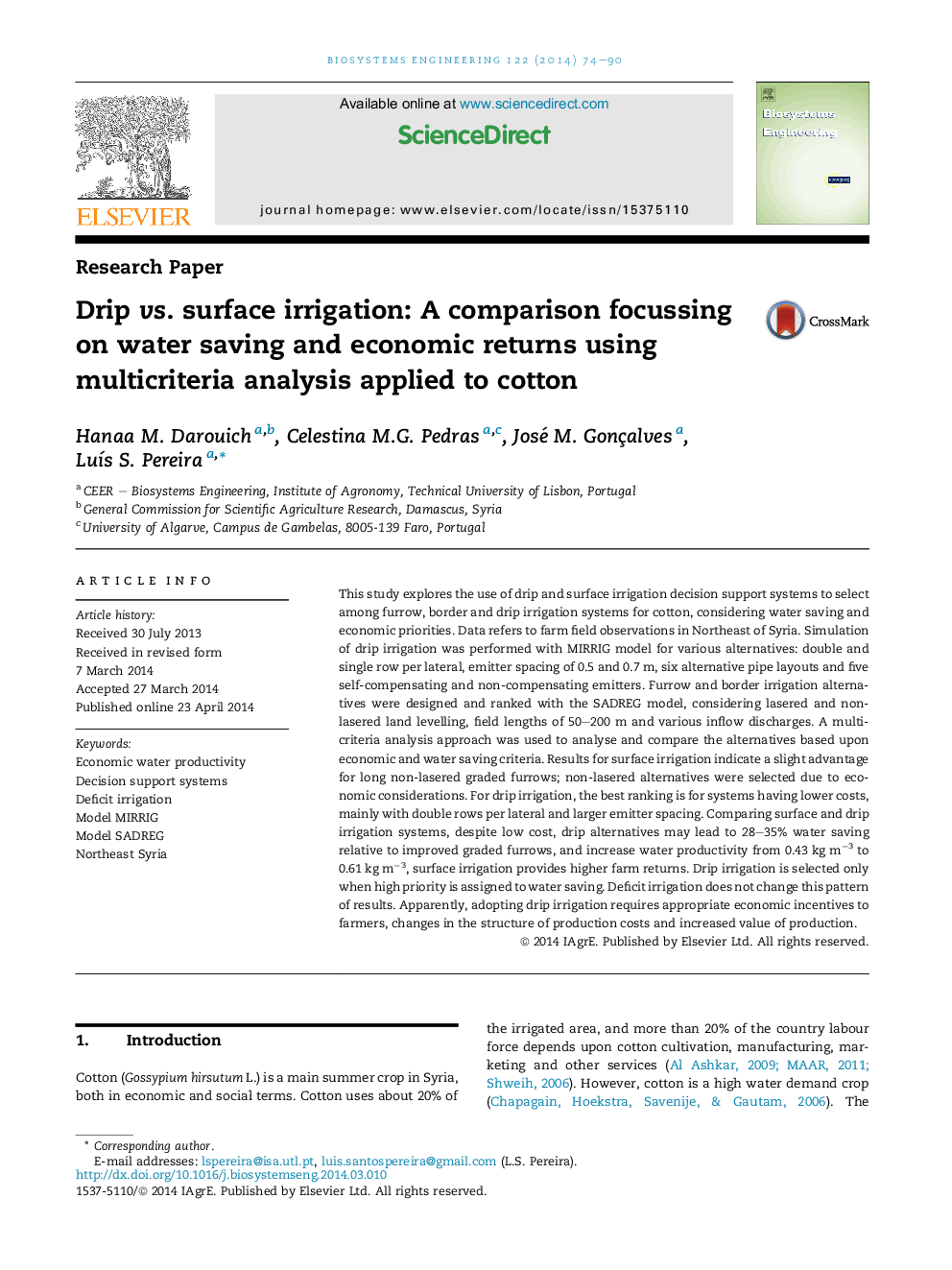| Article ID | Journal | Published Year | Pages | File Type |
|---|---|---|---|---|
| 8055185 | Biosystems Engineering | 2014 | 17 Pages |
Abstract
This study explores the use of drip and surface irrigation decision support systems to select among furrow, border and drip irrigation systems for cotton, considering water saving and economic priorities. Data refers to farm field observations in Northeast of Syria. Simulation of drip irrigation was performed with MIRRIG model for various alternatives: double and single row per lateral, emitter spacing of 0.5 and 0.7 m, six alternative pipe layouts and five self-compensating and non-compensating emitters. Furrow and border irrigation alternatives were designed and ranked with the SADREG model, considering lasered and non-lasered land levelling, field lengths of 50-200 m and various inflow discharges. A multicriteria analysis approach was used to analyse and compare the alternatives based upon economic and water saving criteria. Results for surface irrigation indicate a slight advantage for long non-lasered graded furrows; non-lasered alternatives were selected due to economic considerations. For drip irrigation, the best ranking is for systems having lower costs, mainly with double rows per lateral and larger emitter spacing. Comparing surface and drip irrigation systems, despite low cost, drip alternatives may lead to 28-35% water saving relative to improved graded furrows, and increase water productivity from 0.43 kg mâ3 to 0.61 kg mâ3, surface irrigation provides higher farm returns. Drip irrigation is selected only when high priority is assigned to water saving. Deficit irrigation does not change this pattern of results. Apparently, adopting drip irrigation requires appropriate economic incentives to farmers, changes in the structure of production costs and increased value of production.
Related Topics
Physical Sciences and Engineering
Engineering
Control and Systems Engineering
Authors
Hanaa M. Darouich, Celestina M.G. Pedras, José M. Gonçalves, LuÃs S. Pereira,
